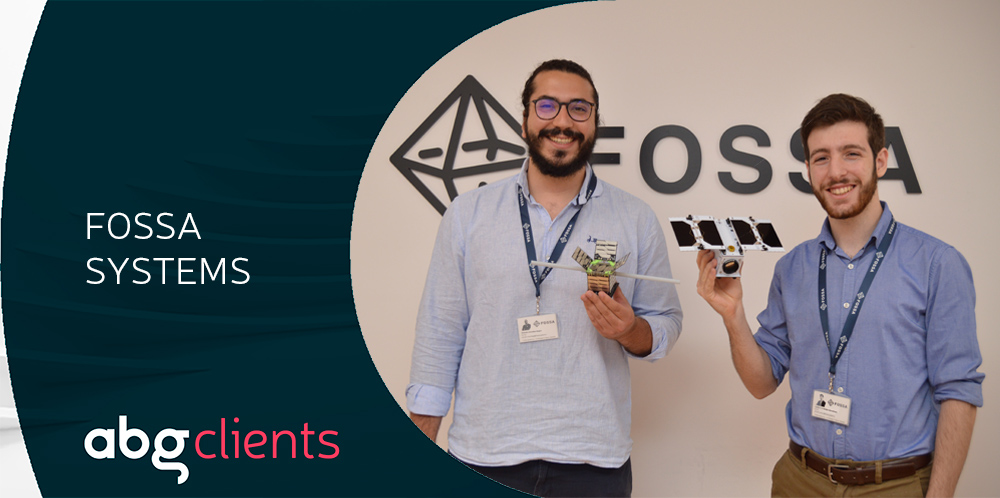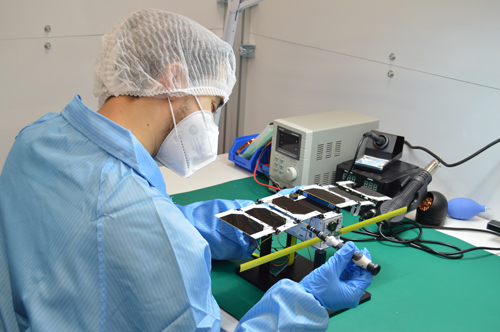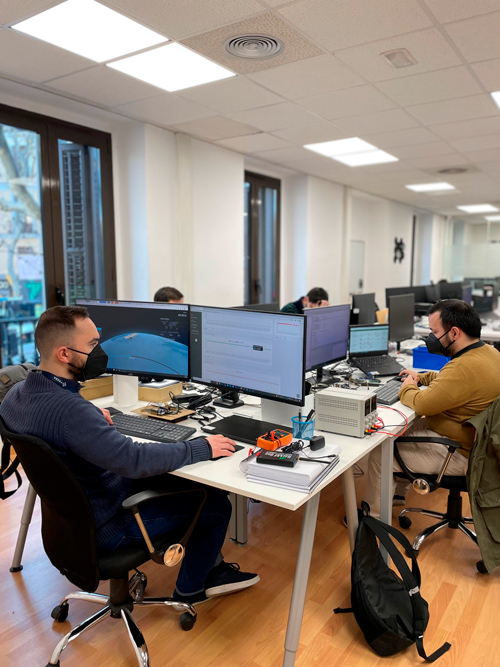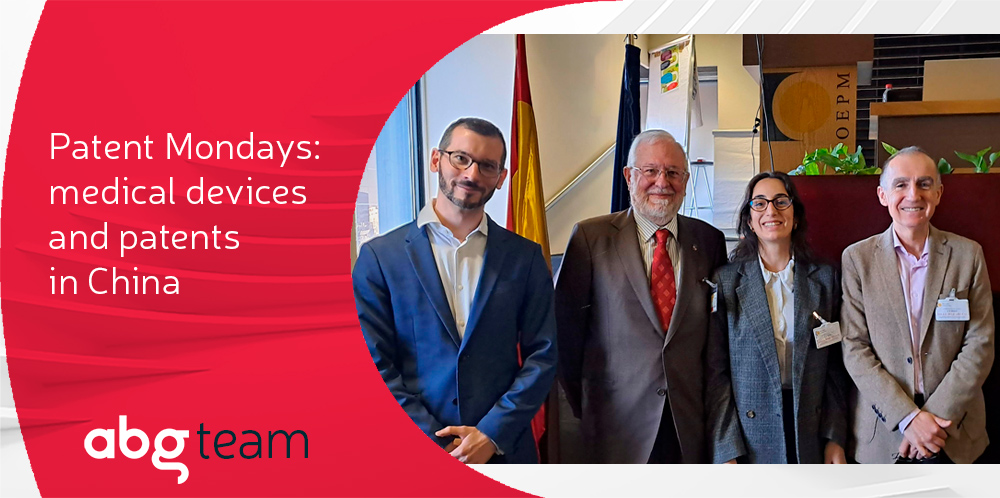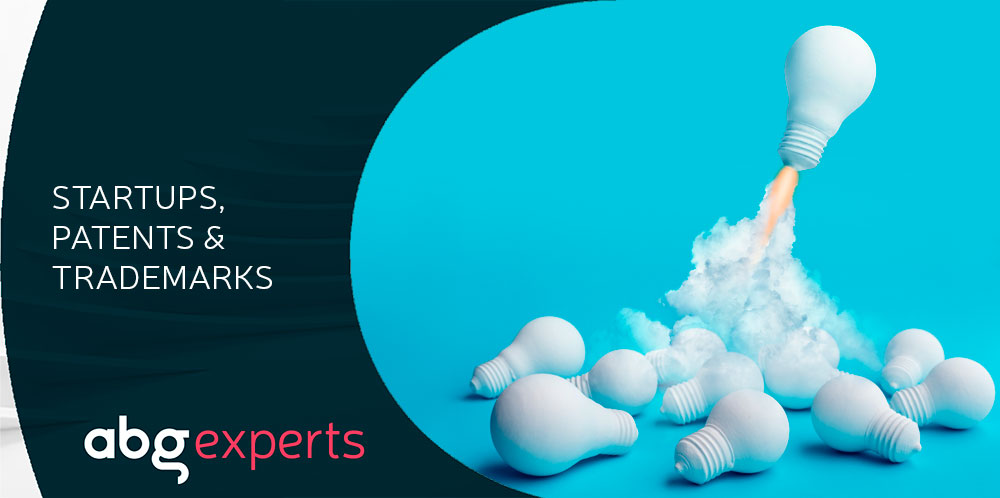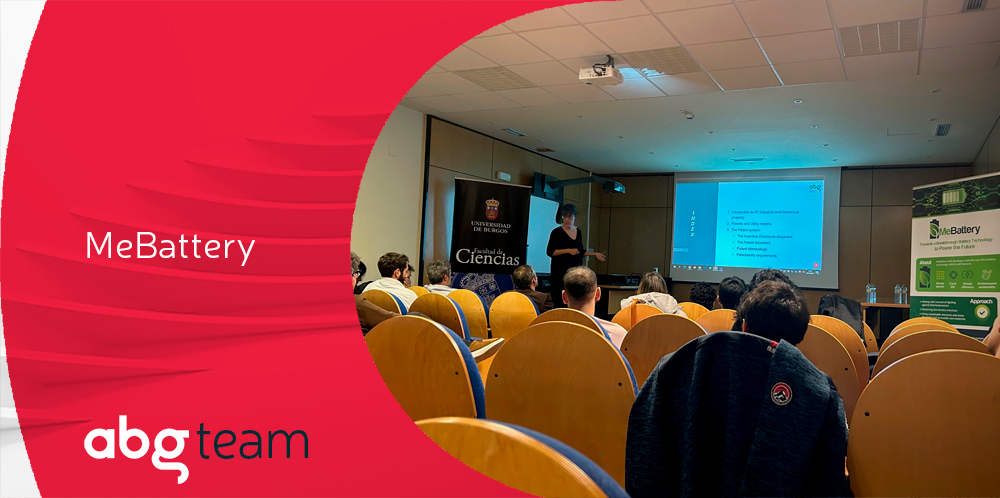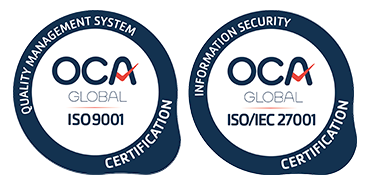Aspiring to be an astronaut and travelling through space is one of those dreams that all or almost all of us have had growing up. This dream is probably one of the forces that continue to drive a space race in which a new chapter is written almost every year.
Some time ago the leading role in such development was reserved only for the great space agencies of top world powers. In recent decades, however, advances have been made towards democratising access to space which furthermore promotes progress on Earth.
From this evolution and from the energy, creativity and curiosity of two young people, FOSSA Systems, whom we have nominated to be included in the Youth Gallery that the World Intellectual Property Organization is preparing for the upcoming celebration of the World Intellectual Property Day 2022 next April 26th, was born. In this new ABGclients article, we learn more about this project from its very founders, Julián Fernández (CEO, 19 years old) and Vicente González Negro (CTO, 27 years old).
Picosatellites: conquering space is not just for giants
What is FOSSA Systems? What does your project entail?
[VICENTE GONZÁLEZ NEGRO]: FOSSA Systems (hereinafter FOSSA) is a start-up based in Madrid that began its commercial activity in July 2020. We offer a vertically integrated low-power IoT connectivity solution for monitoring assets, even in areas of remote access where mobile coverage does not exist or is unreliable.
It is important to understand that our satellites cannot provide a broadband Internet service, meaning it is not possible to watch video streaming or browse the Internet at high speed.
Our solution is distinctive in applications where the monitoring of one or several assets is required through small packages of critical information, such as temperature, location or pH concentration, depending on the specific use case.
What were the origins of the project? How did the idea come about?
[JULIÁN FERNÁNDEZ]: FOSSA began its activity as a non-profit organisation with the aim of democratising access to space. To do so, it had to miniaturise technology to make a lightweight satellite that would drastically reduce the associated launch costs, something which usually makes up a high percentage of the cost of a space mission.
It was possible to develop FOSSASat-1 thanks to the involvement of different people (from all around the world) in the project. In addition to being the first Spanish picosatellite to orbit the Earth (weighing 250 g), FOSSASat-1 was one of the first demonstrators of LoRa technology for use in low-power ground-to-space IoT communications.
What application or applications do these picosatellites have?
- AgroTech, for monitoring crops or livestock on large plots of land.
- Logistics, for monitoring shipping containers, making it possible to trace the origin of merchandise or whether the cold chain has been broken in the case of transporting sensitive material.
An example that provides a good illustration of what we do is that of a container on a freighter: in a port area, the node can send information through the 4G network, and once it is in the open sea, it would connect directly with the satellite.
Nevertheless, we are identifying an increasing number of use cases where our solution can add value, such as the energy or construction industry.
Spatial constellations for terrestrial solutions
What stage is the project currently at?
[VGN] In January 2022 we deployed the first six FOSSASat-2E picosatellites, which are part of a constellation of 80 satellites that we hope will be deployed and operational before 2024. Right now (20 January) we are in what is known as LEOP (Launch and Early Operations Phase), the objective of which is to verify the correct operation of the critical subsystems.
[JF] In the coming months we will start with the different pilot projects that we have lined up. We will continue to expand the network with recurring launches until we reach our goal. With these 80 satellites, we aim to provide coverage in almost real time to all areas of the planet, in order to provide services in critical industries (high need for data availability) as well as non-critical industries.
What are your future plans?
[VGN] Our goal is to continue developing our technology so that with each launch each generation of satellites has better capabilities than its predecessors. We aim for a launch rate of between 3 and 6 months so that the constellation can be operational as soon as possible.
In the medium term, we have an ambitious development plan that involves offering end-to-end solutions optimised for each use case, with low-power IoT connectivity as the core and integrating different agents into our product that complete our value chain, such as sensor manufacturers or partners in data processing.
Youth: an intangible asset
How does the work of FOSSA Systems contribute to making a better future?
[VGN] Our solution will allow end users to generate intelligence and knowledge about their activities, so that they can optimise their processes and increase their production performance or even make the company’s activities more sustainable. We want our solution to be part of a change in decision-making, generating local actions that have a global impact.
The World IP Day 22 is dedicated to young people and you are a company created and managed by young people, how do you think that distinguishes you from the rest?
[JF] The fact that we are a young team does not mean that we do not have experience in developing this type of technology. To date, there is no degree that specifically prepares you to design picosatellites or use spread spectrum modulations. The best way to learn and acquire know-how is by facing the problems that arise every day and solving them. That is precisely where our youth plays a differential role, since we are versatile and constantly evolving.
We hope to be an example for new generations and do our bit in making a change that places Spain at the forefront of technological development. We are not the only deep-tech company formed by a young team in the Spanish ecosystem, and we believe that together we can achieve this evolution based on digitisation.
Intellectual property as a guarantee for the future
How important is protecting intellectual property to you?
[VGN] For a company like ours, protecting the company’s intellectual property is essential for ensuring its long-term survival. Our company is one that focuses its solutions on differentiating technological developments and therefore we must be careful and cautious.
What have you protected to date and how?
[VGN] To date, we have protected our trademark in five classes at the European level. We will apply for trademark protection in other countries as we expand.
We have also implemented a strategy for trade secret protection, which is reviewed and adapted from time to time. In addition, we hope to be able to protect some of our developments with a patent in the near future.
How do you think IP can help you achieve your goals?
In addition, being able to demonstrate our commitment to the project in a tangible way, either through trademark protection or by obtaining a patent, is something tremendously positive for the positioning of the company.
Currently, a company of our size cannot justify hiring an expert in IP matters. However, being able to rely on an external company such as ABG IP is a safe bet for us, since as we evolve, we will have the best IP protection solutions at our disposal.
We want technological development to be our main competitive advantage and without a solid strategy implemented by IP protection professionals, it is something that would be very difficult to achieve.
What importance do you think the sector gives to protecting intellectual property?
[VGN] IP protection is essential, not only for companies in the space industry, but also for all those companies that base their activity on the development of their own technologies. Moreover, in many situations in which private funding is sought great importance is placed on obtaining patents. We have seen that many companies in the sector which have raised millions have several patents in their possession.
How has ABG participated and how do we contribute to your project?
[VGN] ABG has accompanied and advised us in all aspects of IP practically since the beginning of our activity. Furthermore, on a more personal level, I am proud that a company that I saw come into existence, grow and lead the sector in Spain has seen us come into existence and grow. I hope that this relationship lasts for many years, involves many projects and, moreover, that ABG may see us leading our sector.
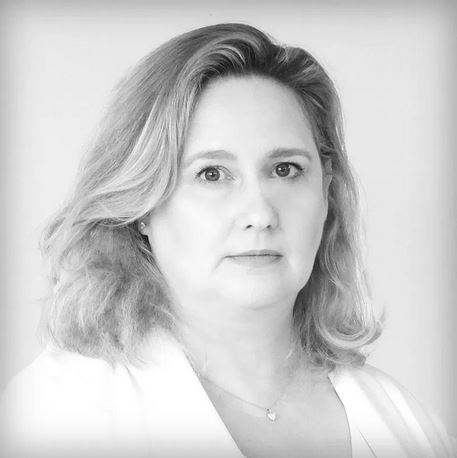 |
Comment by the Agent:
|


